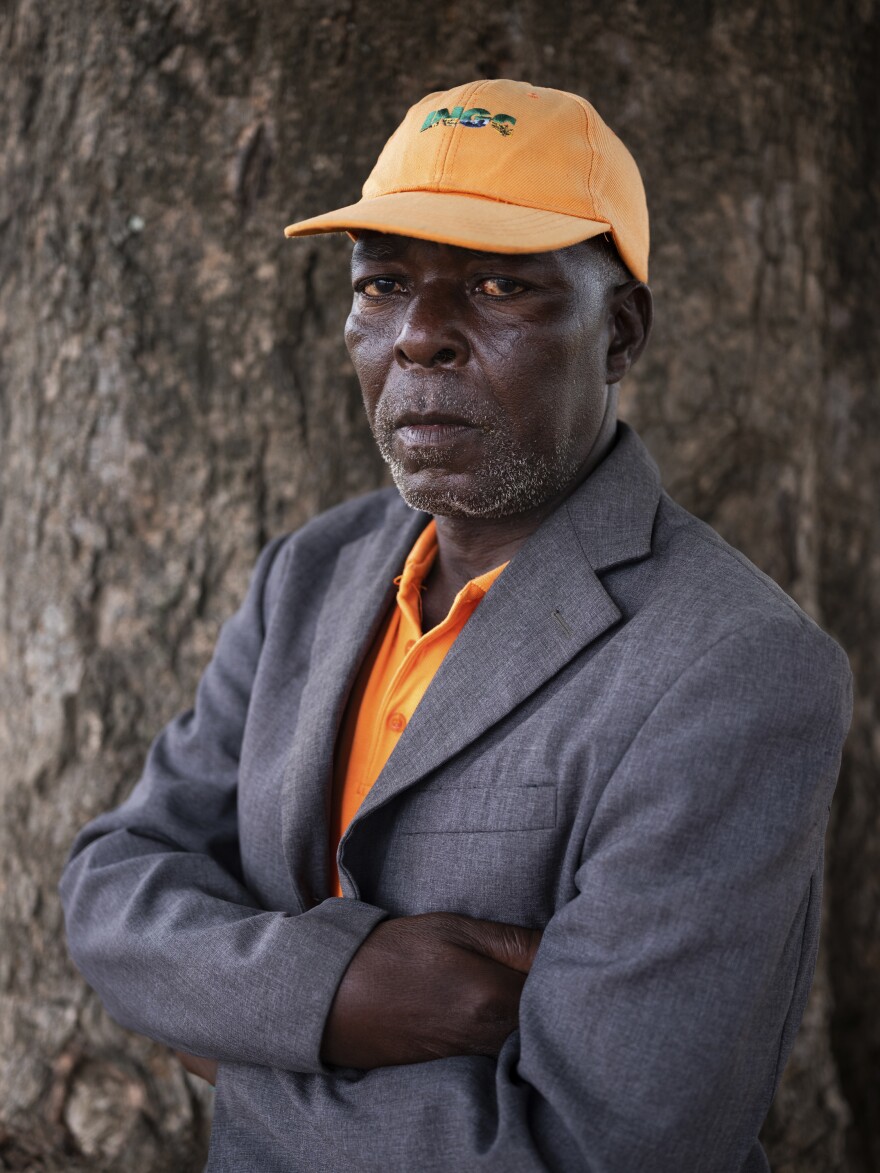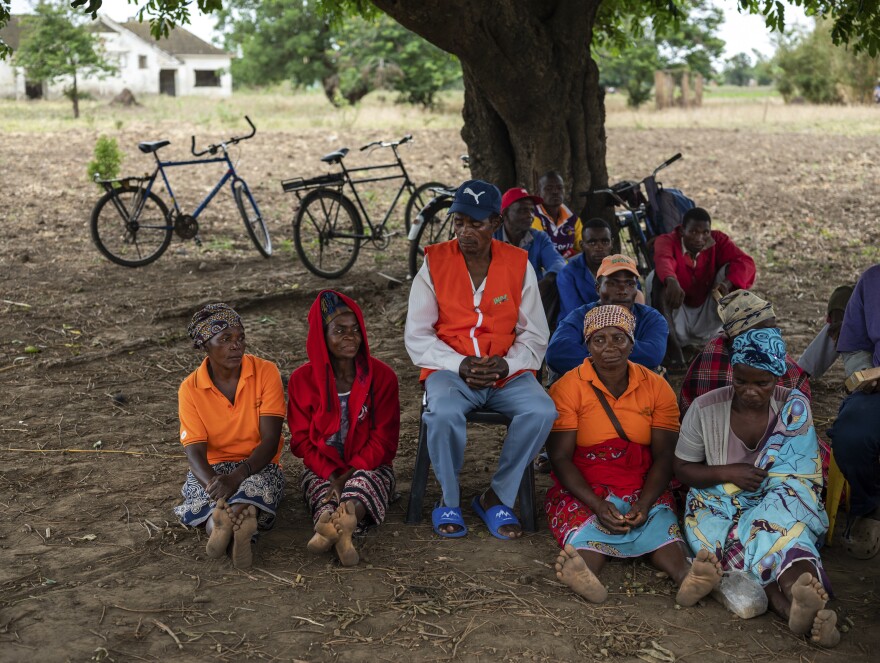In early March, people who live along Mozambique's long coastline began to hear rumors about a cyclone.
The storm was forming in the Indian Ocean, in the narrow band of warm water between Mozambique and the island of Madagascar. Overnight on March 14, 2019, the storm struck Mozambique head-on, barreling over the port city of Beira and flooding an enormous swath of land as it moved inland toward Zimbabwe.
In low-lying, rural Buzi district, the wind arrived like an explosion. It tore the roofs off homes and schools and churches. It ripped trees out by their roots. When the floodwaters came the next day, there were perilously few high spots left where people could escape.

Those in some of the worst-hit areas were cut off for weeks. Neighbors rescued each other and did their best to help each other survive. At least 600 people died in Cyclone Idai, according to the United Nations.
Mozambique's long coastline, sprawling river delta and changing weather patterns make it susceptible to multiple hazards as the climate changes. Flooding, heat waves, cyclones and drought are all getting more frequent and severe as the Earth gets hotter.
Five weeks later, a second cyclone — this one dubbed Kenneth — hit a less populated area on the border between Mozambique and Tanzania. It was the strongest cyclone to ever make landfall in Africa.
In all, the back-to-back storms seriously affected about 2 million people.

"The example of Mozambique must be an alert for all," United Nations Secretary-General Antonio Guterres said when he visited Beira over the summer.
The disasters put Mozambique's government and citizens in the unenviable position of responding to an onslaught of climate-driven disasters while also doing their best to prepare for an even more dangerous future. They also have made clear that, absent international climate action, there's only so much that vulnerable countries can do to adapt to extreme weather.
The Front Lines
Long before the cyclones of 2019, Mozambique's government and the International Red Cross had realized that flooding was a serious problem in the country. In 2000 and again in 2013, rivers overflowed and hundreds were displaced by water.
But far fewer people died as a result of the 2013 floods. In the intervening years, Mozambique's government and the International Red Cross had studied where and how people were vulnerable to floods and other disasters, then asked community leaders to volunteer to serve on Disaster Risk Reduction Committees for their towns and neighborhoods.

Such a decentralized approach to disaster preparedness is something that the Red Cross and others argue for around the world. The idea is that local leaders learn how to prepare for disasters and help their neighbors stay safe during extreme weather events.
Such programs are not a replacement for national and international climate action, but they are nonetheless an important part of building climate resilience in many places.
By 2017, more than 14,000 people were serving on more than 1,000 local committees around Mozambique, according to the World Bank.
"I'm responsible for making sure everyone knows where the high ground is," explains Luis Josine, who has lived in the farming community of Mondiane since 1961 and became the leader of his local disaster committee when it was founded five years ago.
The tools and training he received were relatively basic: a handheld radio for weather warnings, an orange vest, a whistle and three flags of different colors.
Mondiane is near a river that's prone to flooding. In 2000, dozens of people who lived in this area drowned, Josine says.
Today when there is a flood warning, Josine goes through town blowing a whistle and waving a flag. If the flag is blue, it means a flood is likely in two or three days, he explains. If it's yellow, it means one day. If the flag is red, it's an emergency, and people should evacuate immediately.
"It is good," he says. "People listen. They know to leave and go up the road." That makes him feel proud, especially since he has noticed that the flood risk in the town of Mondiane is increasing.
"We've been noticing the climate changing here since around the year 2000," he explains. "The floods are getting bigger and more severe. The droughts are getting longer."
Climate scientists say that's in keeping with trends in the whole region and that extreme weather is expected to get more common as the Earth continues to heat up.
'We Are Really Suffering'
More extreme weather can also lead to less resilience.
"Disasters put people back into poverty," says Michel Matera, a senior analyst at the World Bank in the capital of Mozambique, Maputo. Without efforts to decrease the damage from floods and other disasters, he says, people will be "continuously trapped into poverty."
It's particularly challenging to avoid that vicious cycle when climate change drives more than one disaster in a short period of time
In the months after the cyclones drew international attention to Mozambique, another disaster was unfolding more quietly: a drought.

The rain from the cyclones had come all at once, in a torrent, but the more moderate, continuous rain that farmers rely on didn't fall in much of the country. Disaster Risk Reduction Committees worked to lessen the drought's blow.
"We collect the water, we do our farming very carefully," explains Juliet Fernando Chaque, a member of the local committee in the town of Xidwaxine.
She says the community has done a lot in recent years to cope with extreme weather, including drought. For example, the town now has a communal silo to store food, and farmers plant crops that are tolerant of drought, like sweet potatoes.

But this ongoing drought has been so extreme, it has overwhelmed their efforts. It began in 2018, and at this point, any food that residents managed to store is long gone. The soil is dry and cracked. Planting season came in September and still there was no rain. So there's almost no planting.
Women from Xidwaxine have started walking three hours to a lake where water lilies grow to harvest the plants and eat the bitter tubers at the base of the roots.
"We are really suffering," Chaque says.
Adapting to drought here will likely require comparatively big, expensive infrastructure projects to bring water out to the fields. Putting the brakes on climate change in general will require a global shift away from fossil fuels that has been slow at best.
That's a difficult reality for local leaders like Chaque, who have proudly, persistently pushed their communities to become more resilient to global changes that they cannot control.
Copyright 2023 NPR. To see more, visit https://www.npr.org.




